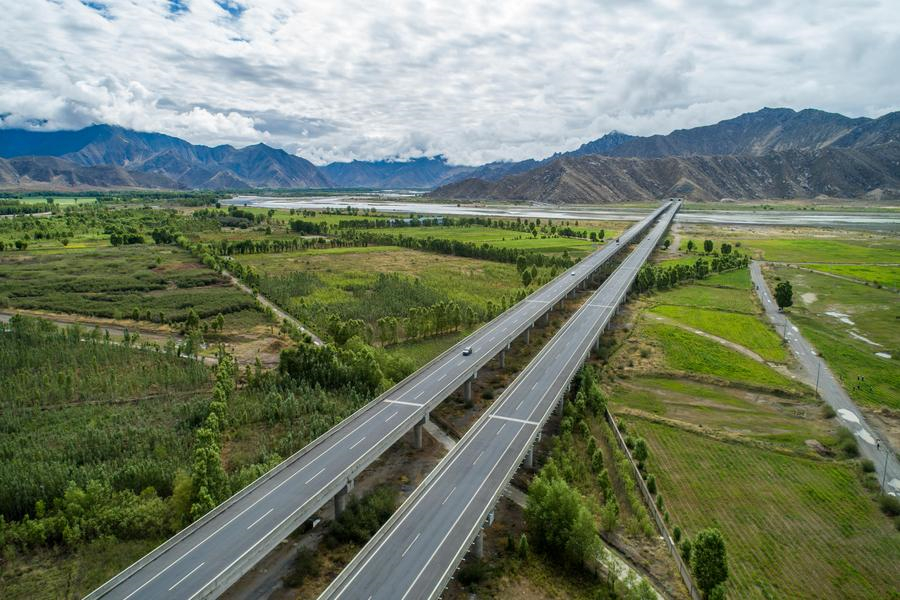Highway linking Xizang's largest cities opens to traffic

An aerial drone photo taken on June 27, 2024 shows a view of a high-grade highway linking Lhasa and Xigaze in southwest China's Xizang Autonomous Region. [Xinhua/Tenzing Nima Qadhup]
LHASA -- A high-grade highway linking the two largest cities in southwest China's Xizang Autonomous Region officially opened to traffic Sunday, cutting travel time between the cities in half, said the regional transport department.
The highway, linking the regional capital Lhasa and Xigaze, the region's second-largest city, stretches 245 km. The four-lane highway cuts down travel time between Lhasa and Xigaze from about six hours to three hours. So far, the mileage of high-grade highways in Xizang has reached 1,196 km.
The highway is one section of the national highway that links the city of Ya'an in southwest China's Sichuan Province and Yecheng County in the Kashgar Prefecture of northwest China's Xinjiang Uygur Autonomous Region.
"The high-grade highway will serve as an important channel linking Lhasa and the west of Xizang. It will also play a crucial role in further optimizing the regional road network structure, improving the national comprehensive transport channel, and facilitating the region's further opening up to South Asia," said an official of the regional transport department.
The high-grade highway marks another significant development in Xizang's transport after the 251-km railway line that links Lhasa and Xigaze was put into operation in 2014.
Xigaze, which boasts about 50 percent of Xizang's highland barley production, is known as the "granary of Xizang." The Panchen Lama's traditional seat -- Tashilhunpo Monastery -- is located in the urban area of Xigaze.
"I've witnessed the change from past transport limitations to the connectivity we have today — from muddy roads to wide highways. The opening of this 'road to happiness' will make medical treatment, education and employment more convenient, and we will be able to transport our agricultural and livestock products to the market more easily, which will help increase our incomes," said Nyima Tsering, a farmer in Quxu County, Lhasa.
"When I was a child, most of the roads were muddy. It took me a day and a half to arrive in Lhasa by truck when I went there for the first time as a teenager," said Gyaibo, a farmer in Xigaze, adding that with the opening of the highway, it will be more convenient to travel farther and to more places to work and earn money.
























